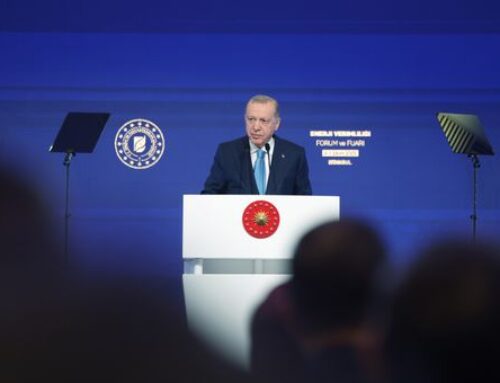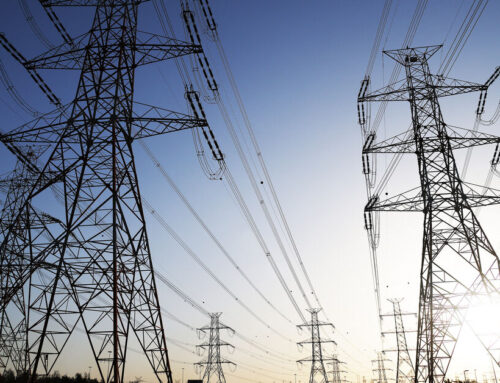Why are major economies choosing the same electricity sources?
October 6, 2025
Brazil, China, India, Saudi Arabia, and the United States are all major economies and have distinct levels of economic development, resource endowments, and climate and energy security goals. Despite their differences, however, all five countries are overwhelmingly building the same energy sources for their new electricity capacity needs. Countries across every continent are turning to solar and wind because of their powerful economic and security benefits.
Sources: Ministry of Energy, Brazil; Ministry of Renewable Energy, India (2); National Energy Administration, China (2); General Authority for Statistics, Saudi Arabia; Federal Energy Regulatory Commission, United States
Sources: Ministry of Energy, Brazil; Ministry of Renewable Energy India (2); National Energy Administration, China (2); General Authority for Statistics, Saudi Arabia; Federal Energy Regulatory Commission, United States
Brazil added only non-fossil power in 2024, with solar and wind comprising 97 percent of new additions. Despite Brazil’s abundant hydropower resources, the cheapest capacity additions are typically solar photovoltaics and wind turbines; these technologies also require no water and enable Brazil to hedge against droughts that have become increasingly frequent.
In 2024, India built 27.9 gigawatts (GW) of solar and wind, in addition to coal and nuclear energy. Despite new coal additions, almost 90 percent of India’s 2024 additions were from non-fossil sources, a clear direction of travel as the country bids to become a global solar hub.
China is taking an all-of-the-above approach to energy, installing more solar, wind, hydropower, nuclear, natural gas, and coal generation capacity than any other economy. Still, solar and wind accounted for 84 percent of capacity expansion.
The United States also predominantly built solar, wind, and natural gas capacity in 2024, as it continues to move beyond coal plant construction. Solar and wind will remain important elements in determining the United States’ durable competitiveness, as our colleagues David Goldwyn and Andrea Clabough write.
But Saudi Arabia’s turn to solar and wind may be the most surprising of all. In 2024 itself, Saudi Arabia imported 17 GW of solar panels from China and its 3.6 GW of solar capacity installations accounted for all new electricity capacity installed that year. Under the renewable strategy submitted by the Ministry of Energy to the UNFCCC, Saudi targets about 130 GW of renewable capacity by 2030. Saudi Arabia’s turn to low-carbon energy sources could also hold significant implications for global oil markets, as the Kingdom still uses oil for about a third of electricity generation—and up to 1.4 million barrels per day in the summer. As solar, wind, and batteries (and natural gas) displace domestic power burn, it will free up more barrels for exports.
These five economies include the world’s largest polluter (China) and the world’s largest crude oil exporter (Saudi Arabia). All are turning to solar and wind not out of climate idealism, but because it benefits their economic and energy security interests in the near-term. Indeed, most of the identified countries do not have net-zero targets or are currently not on pace to achieve their targeted net-zero emissions by 2060 or 2070—a decade or two after Western European countries plan to achieve their climate targets.
Sources: Climate Action Tracker, Brazil First NDC, India LT-LEDS, China UNFCCC, US UNFCCC, Saudi Green Initiative
Despite these countries’ lack of climate ambition, or even their outright reliance on fossil fuel exports, they are overwhelmingly turning to solar and wind for new capacity installations.
Solar and wind resources are deployed globally by disparate actors because of their clear economic and national security benefits. These technologies are inexpensive and modular, require no fuel, can be constructed rapidly, and reduce energy import dependencies. Once installed, and assuming proper cybersecurity precautions, they can operate without interference.
While solar and wind dominate new capacity, they alone cannot guarantee secure and affordable power. Other forms of energy, including nuclear, hydro, natural gas, and geothermal power, remain critical for balancing the grid. Still, solar and wind are dominating incremental electricity installations because they are simply cheaper and more useful for the artificial intelligence race than alternatives.
Other forms of energy have their purposes, but any country that flatly rejects solar and wind will find itself poorer and weaker.
Joseph Webster is a senior fellow at the Atlantic Council’s Global Energy Center and the Indo-Pacific Security Initiative; he also edits the independent China-Russia Report.
Hansika Nath is a young global professional at the Global Energy Center.
This analysis reflects their own personal opinions.
about the author
stay connected
related content
our work

The Global Energy Center develops and promotes pragmatic and nonpartisan policy solutions designed to advance global energy security, enhance economic opportunity, and accelerate pathways to net-zero emissions.
Brazil
China
Energy & Environment
India
Renewables & Advanced Energy
Saudi Arabia
United States and Canada
Image: Rio de Janeiro (Gustavo Nacht, Unsplash, https://unsplash.com/photos/an-aerial-view-of-a-city-at-night-DqwmKQJP5J8)
Search
RECENT PRESS RELEASES
Related Post





